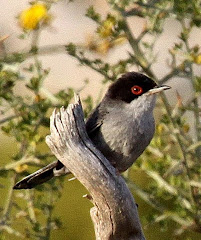March 19, 2012:
Northern Goshawks (Accipiter gentilis) are perhaps the most difficult resident raptors to identify with certainty due to a similarity to Sparrowhawks. There is an apt saying that if you are unsure if it’s a Goshawk, then it’s a Sparrowhawk. These are secretive birds, usually inhabiting extensive tracts of relatively remote coniferous woodland, so that sightings are usually when airborne and even then can be infrequent, distant, and rather brief. In early spring, birds display near their nesting grounds which gives the best opportunity to see them. Like many raptors they are prone to persecution and, as they only occur in small numbers, it’s important that localities are not publicised.

This morning, over an an area of wooded fell-side, this bird put in an appearance between Sparrowhawk sightings. At the time there was a short burst of sunshine but the bird was distant against a bright sky so making photography very difficult. The composite photo was taken in a five second period as the bird circled away to the right. The bottom right photo best shows its typical bulky flight silhouette. Identification was further confirmed by three separate experienced raptor watchers.
An excellent account relating to Goshawk identification is given by Keith Vinicombe at http://www.birdwatch.co.uk/categories/articleitem.asp?item=744













































.jpg)



